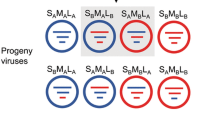Summary.
Hantaviruses (genus Hantavirus, family Bunyaviridae) represent a prime example of emerging viruses. Since isolation of the prototype Hantaan virus in the late 70s more than 20 new species have been described and the number is increasing fast thus demanding for a more refined classification. Taking into account that hantaviruses are difficult to isolate in cell culture, one should not be surprised that most of the “newcomers” were first described as distinct hantavirus genotypes. Moreover, the only “solid” characteristics of many hantavirus species still exist in the form of nucleotide sequences of their genome. The relatively short history of hantavirology can thus be taken to illustrate how genetics can contribute to (and even, perhaps, dominate) discovery, characterization and classification of viruses. In this review the following aspects of hantavirus genetics are discussed: (i) genome structure; (ii) genetic diversity and evolution; and (iii) use of genetic criteria in current taxonomy of hantaviruses. In addition, several examples of classification of hantavirus species (New York virus, Saaremaa virus and Hokkaido virus) are given, and future prospects are analyzed.
Similar content being viewed by others
Author information
Authors and Affiliations
Additional information
Received October 15, 2001 Accepted October 22, 2001
Rights and permissions
About this article
Cite this article
Plyusnin, A. Genetics of hantaviruses: implications to taxonomy. Arch. Virol. 147, 665–682 (2002). https://doi.org/10.1007/s007050200017
Issue Date:
DOI: https://doi.org/10.1007/s007050200017




